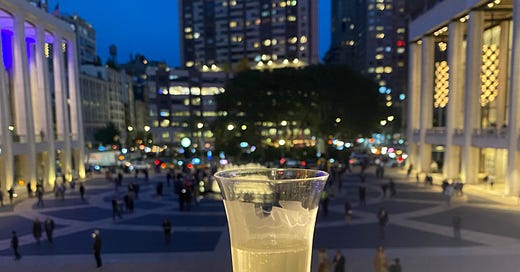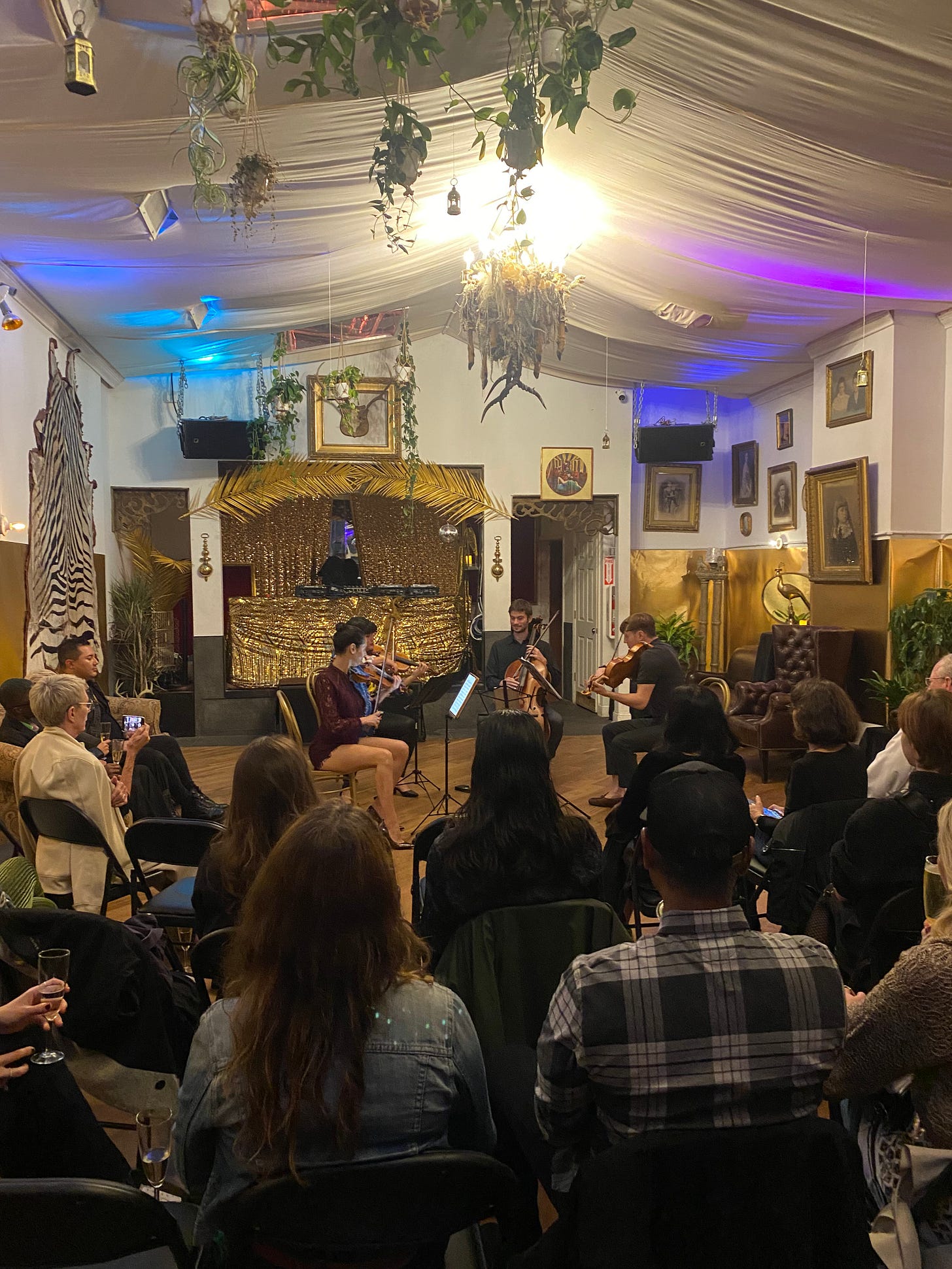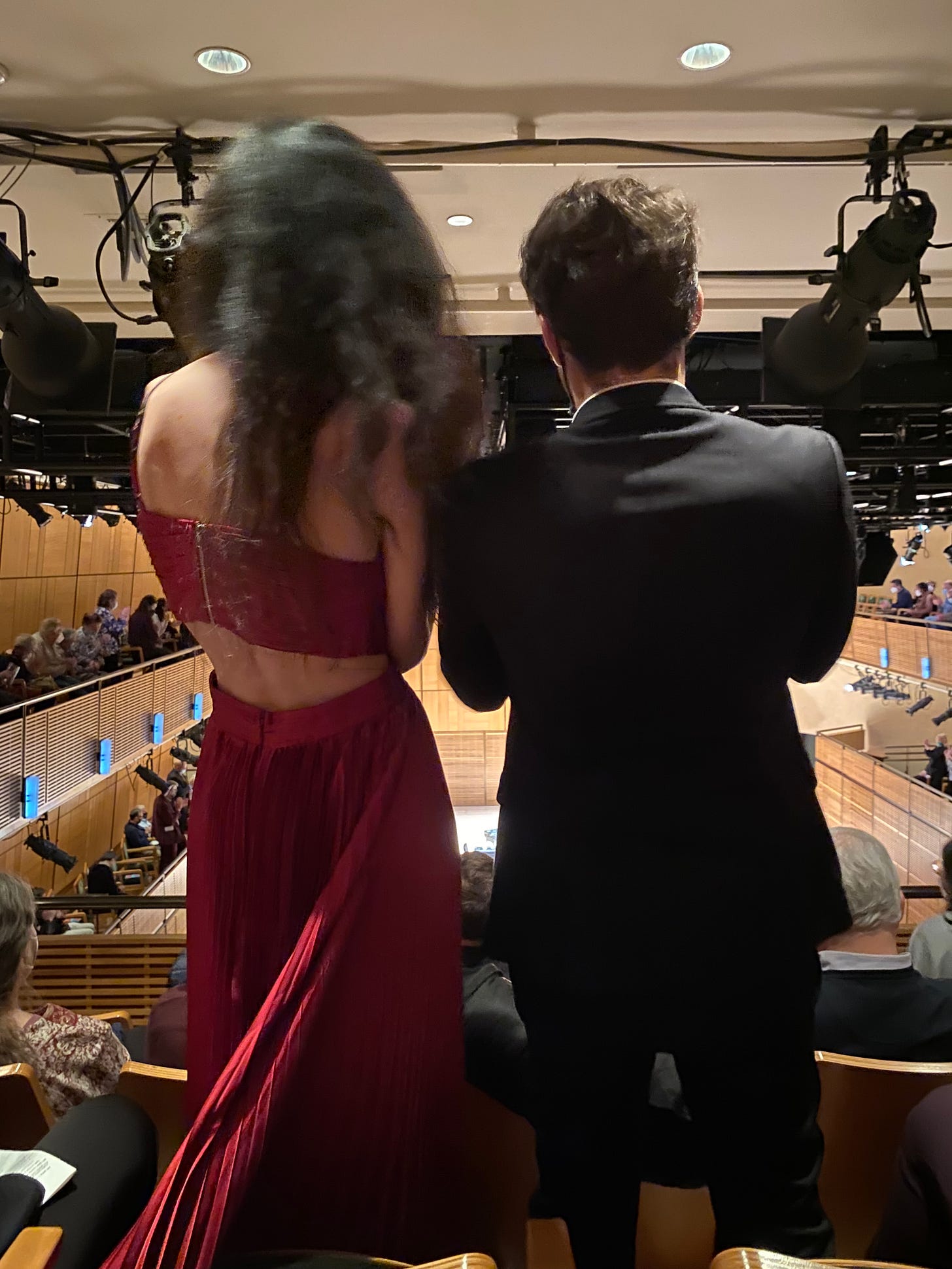Paradiso e Inferno
Since moving to New York, I’ve felt this pressure, mostly internal, to see and hear everything. It feels like something’s happening every night, and everything is “one night only.”
It’s a brand of FOMO particular to the ephemeral arts.
This past week, I may have overextended myself, seeing three concerts in the span of three days. I only just now have time to write up my mini reviews.
On Wednesday, Oct. 12, I saw Lady Macbeth of Mtsensk at the Met Opera. The opera by Shostakovich, based on a novella by Nikolai Leskov, takes place in Russia and has little to do with Shakespeare.
The sets, by Graham Vick, reflect 1950s suburban banality: green AstroTurf, a line of doors painted with Magritte-like clouds, a haunting light coming from the Smeg fridge.
The libretto isn’t exactly subtle. When Katerina feeds her father-in-law, Boris, kasha and mushrooms laced with rat poison, she explains it’s because “you’re a rat yourself.”
Indeed, the opera contains three murders (I counted four deaths total), with lots of rape, and a surprising amount of choreographed air humping. Shostakovich’s punchy score, skillfully conducted by Keri-Lynn Wilson, only adds to the surreality.
All the talk of mushrooms made me hungry. I was only able to survive the three-and-a-half hours with the help of a $20 sandwich purchased at intermission.
I want to say it was overpriced. But it was the best smoked salmon on pumpernickel I’ve ever eaten. And I’m sure that Shosty would have loved it.
On Thursday, Oct. 13, I went to “Bubble & Squeak,” hosted by House of Yes. It was billed as chamber music with a champagne-fueled afterparty.
I heard about “Bubble & Squeak” from Lex, a queer social app. Believe it or not, this was not my first time hearing about a classical concert this way.
I had assumed it was at the nightclub itself — the bouncer was very confused by my questions— but it was actually next door at 8 Wyckoff. The space was filled with vintage photos, taxidermy animals, and gold chandeliers. Very Bushwick.
Glencourse Music played a slightly pitchy rendition Philip Glass’s “Mishima” String Quartet — a piece that keeps following me everywhere — and an arrangement of Scandinavian folk tunes by the Danish String Quartet.
The champagne was good.
On Friday, Oct. 14, I saw “Passacalle de la Follie,” with L’Arpeggiata and countertenor Philippe Jaroussky, at Carnegie’s Zankel Hall. The concert consisted mostly of 17th-century French court songs.
Jaroussky seemed stiff at first but warmed up quickly. He sounded especially beautiful — and unhinged! — in Henri Le Bailly’s “Yo soy la locura” or “I am madness.”
One of my favorites, however, was an improvisation, sans Jaroussky, on La Dia Spagnola. The violinist, Kinga Ujszaszi, was totally on fire, and Doron David Sherwin made the cornetto sound jazzy. While I’m not usually a fan of “drum solos,” David Mayoral’s held my attention.
With Zankel being subterranean, you could hear the rumble of the subway in Etienne Moulinié’s “Enfin la beauté que j’adore.”
The first of two encores, “Ciaccona del Paradiso e del Inferno,” was hilarious. A hammed-up sing off between Jaroussky, representing Paradiso, and Sherwin, admirably representing Inferno.
But the real hell was trying to leave. Hoping to beat the cane-and-walker-filled crowd, I dipped during the applause to the second encore, Monteverdi’s “Sì dolce è'l tormento.”
But, forgetting the Mezzanine was at ground level, I descended only to find myself stuck waiting, like everyone else, for the up escalator.






